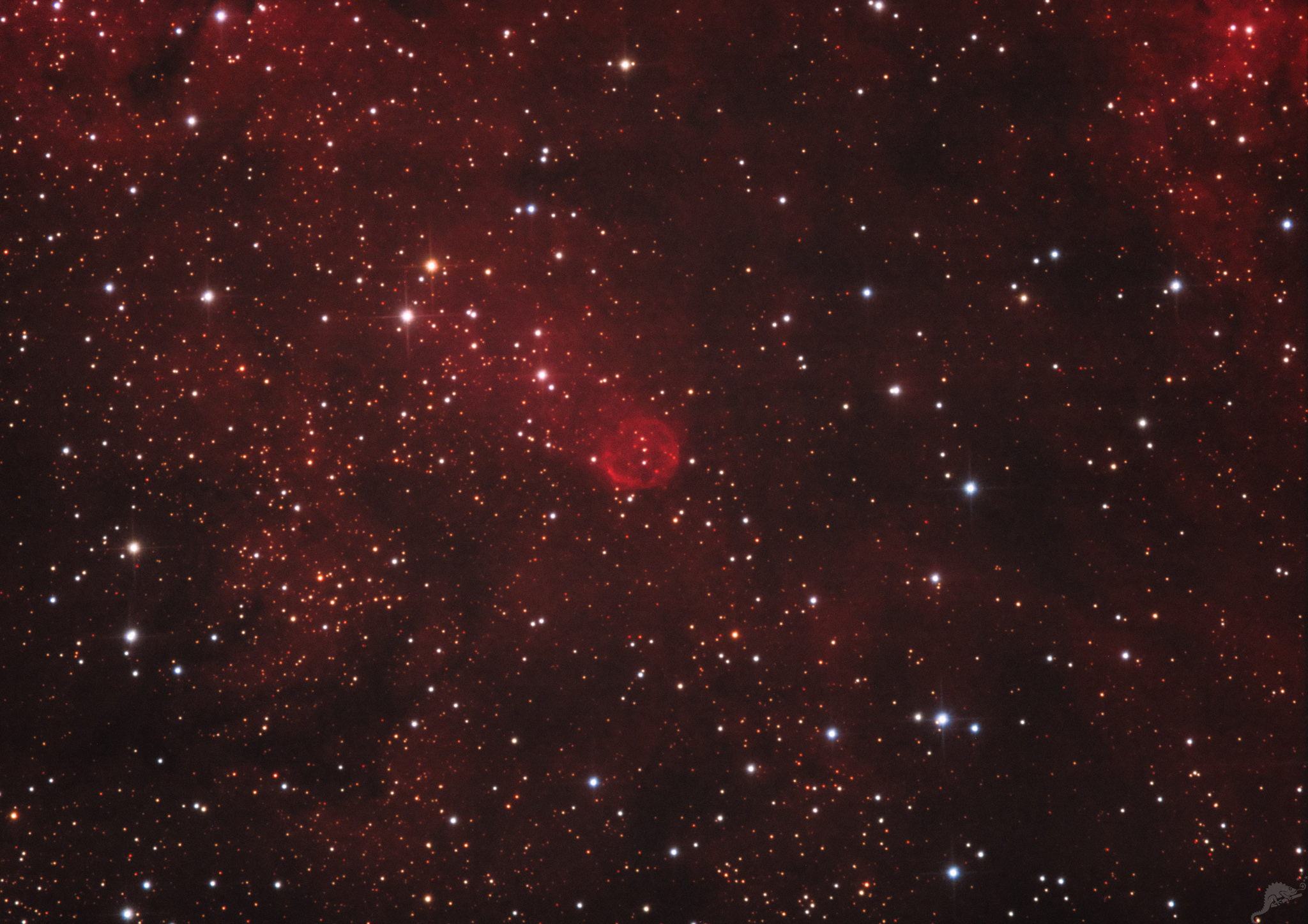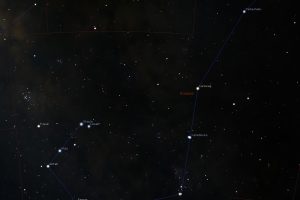PK 343-00.1 / Nova Scorpii 1437 in the constellation Scorpius
In 1437 Korean astronomers observed a new star in the constellation Scorpio for two weeks. They discovered a nova, a brightness burst in a close binary system consisting of a white dwarf star and its companion. The white dwarf continuously collects hydrogen gas from the companion star. When the collected gas exceeds a certain mass, the nuclear fusion process in the hydrogen ignites abruptly and blasts parts of the collected gas layers into space.

| Date: | 06.-08.08.2021 |
| Optics: | Planewave CDK 12.5 with Televue 0.8x reducer |
| Aperture: | 318 mm |
| Focal Length: | 2030 mm |
| Camera: | QHY163M |
| Exposure: | R:G:B 4:4:4 x 300 s Hα 34 x 600 s |
| Location: | Chamaeleon Observatory, Onjala Lodge, Namibia |
| Processing: | Nebulosity, StarTools, Starnet++, Photoshop |
| Diameter: | 1.8 light years |
| Distance: | 3,370 light years |

